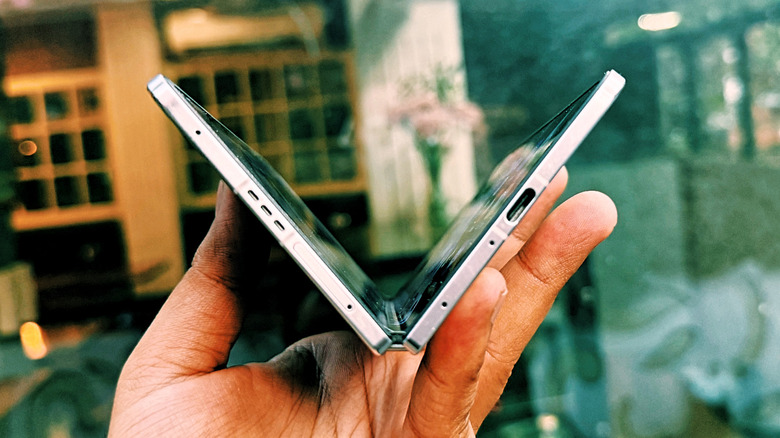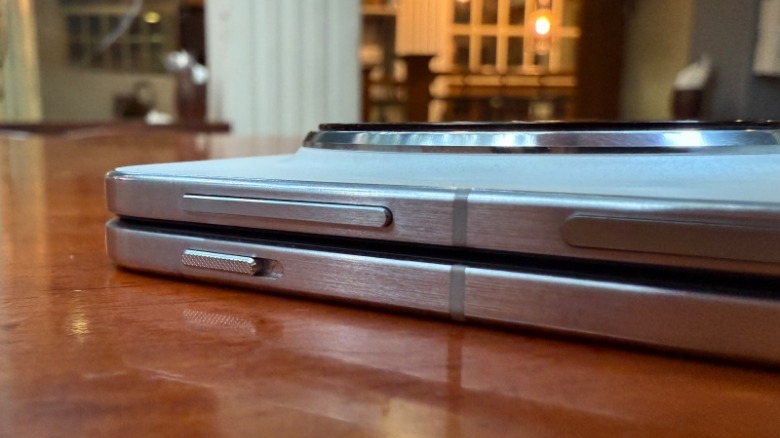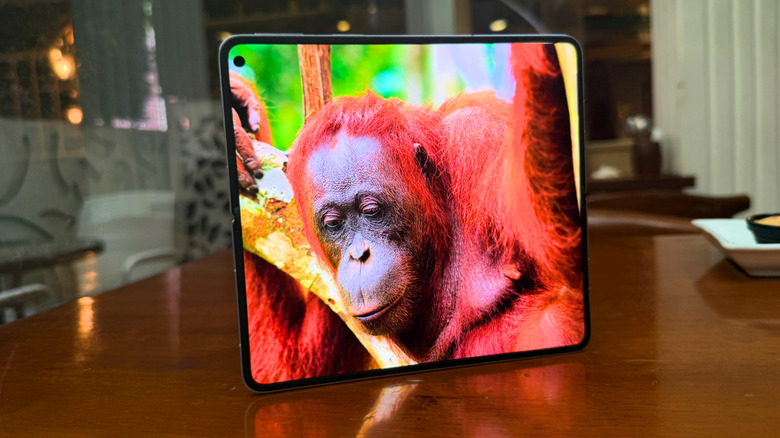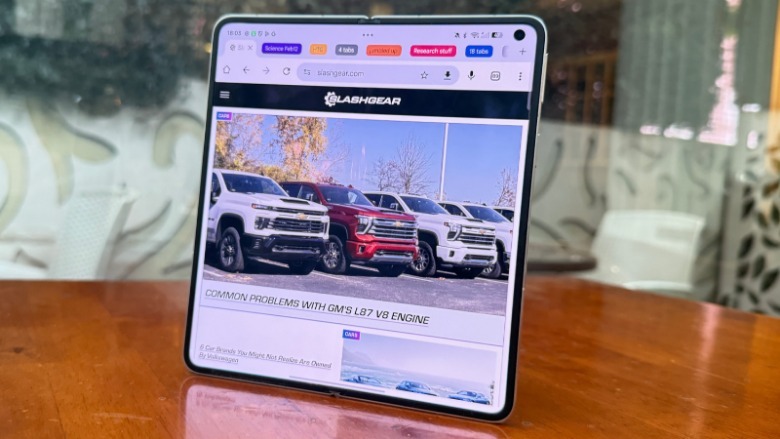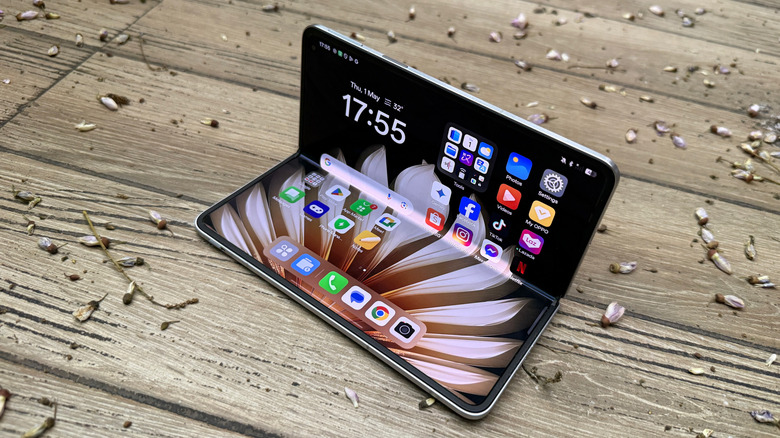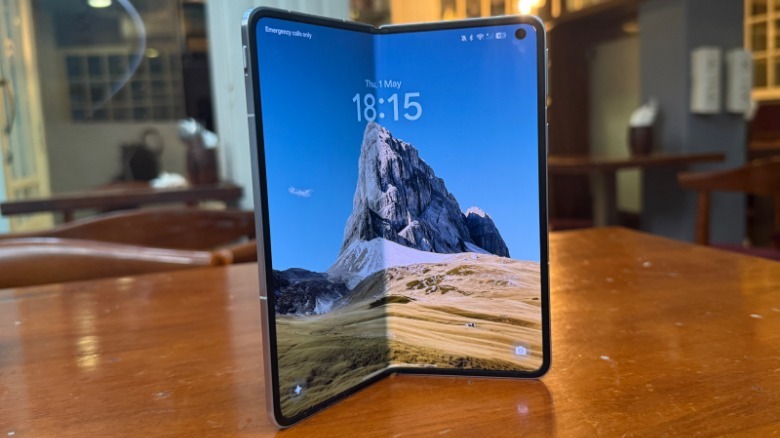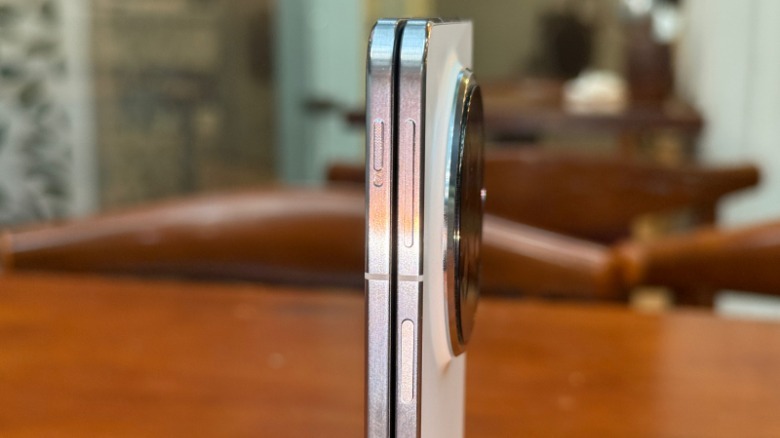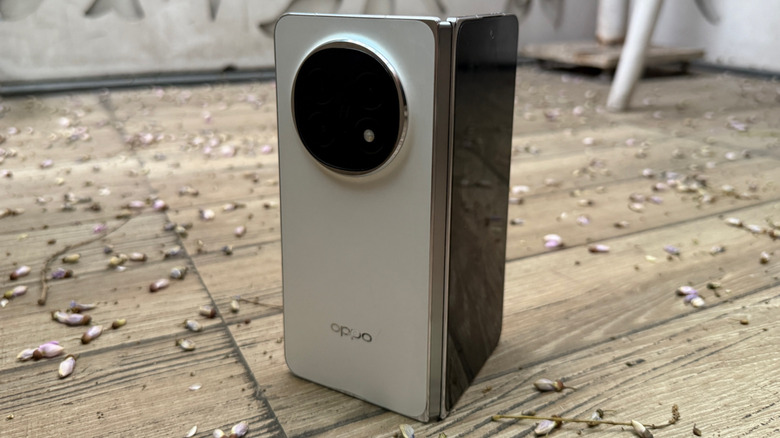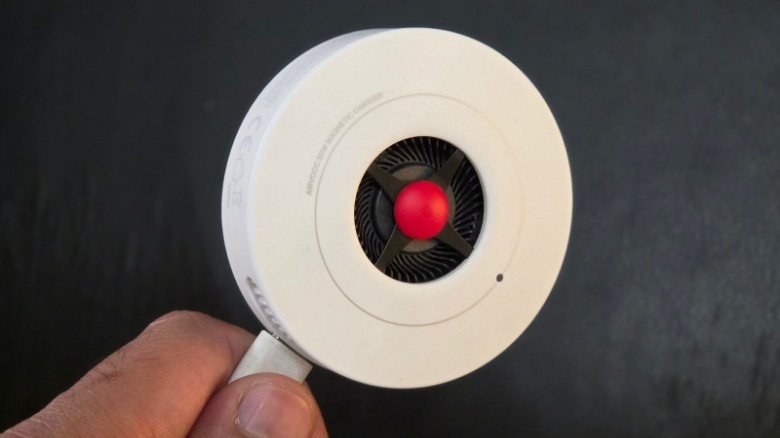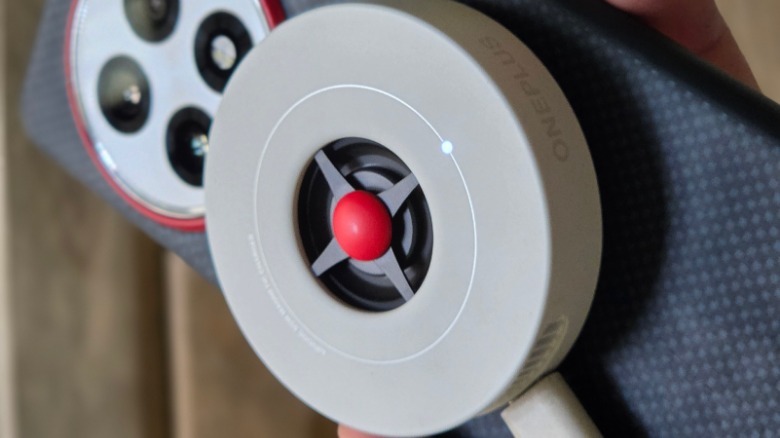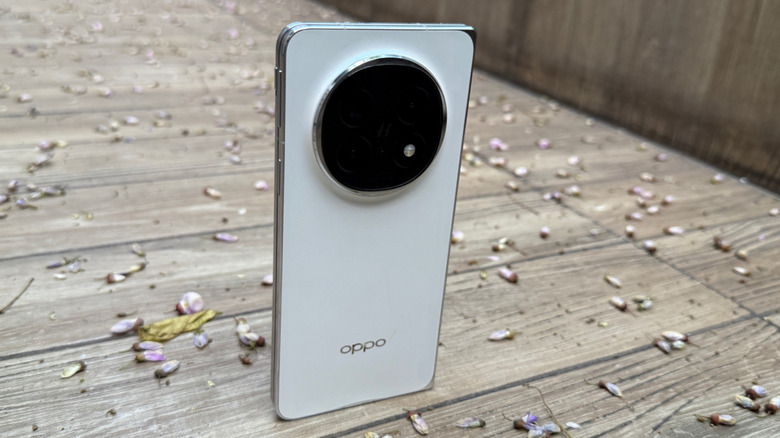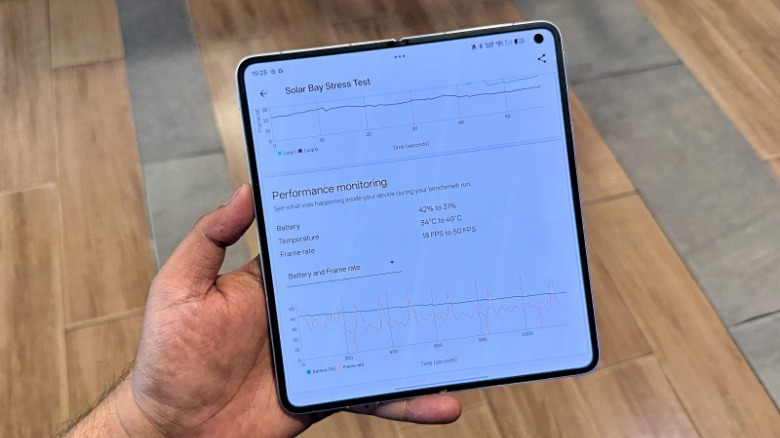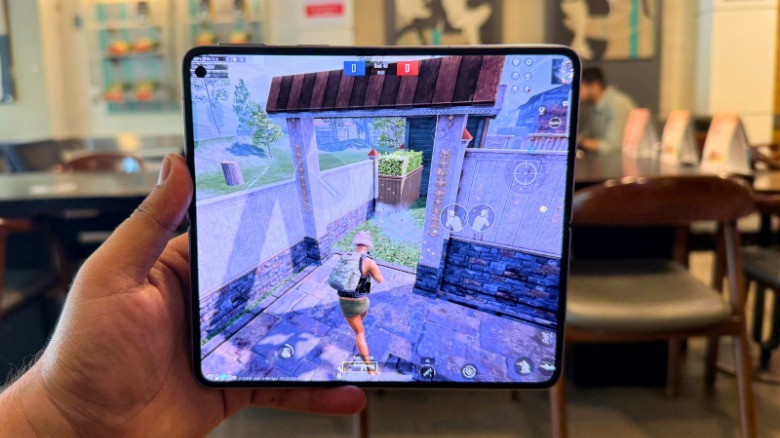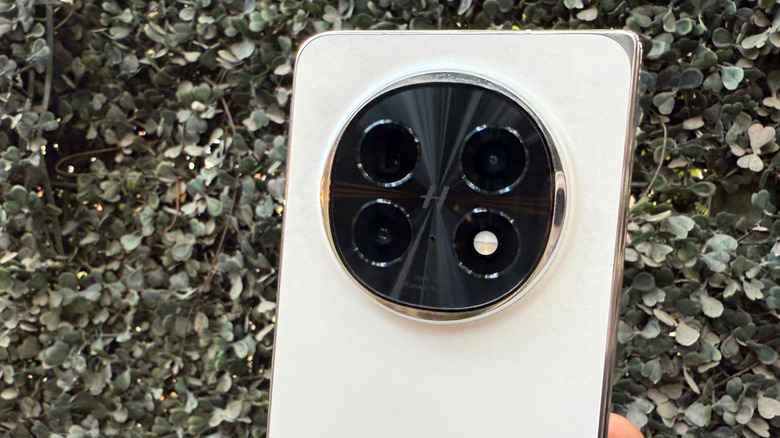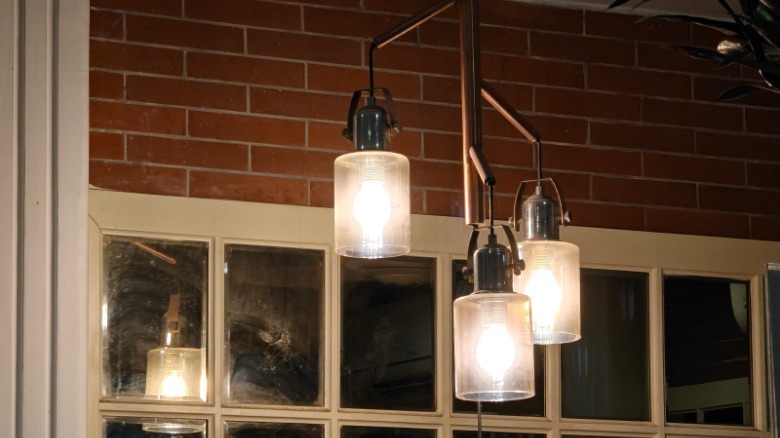We Tried The World's Thinnest Foldable Phone: These 5 Things Stand Out
Oppo set a new precedent by launching the world's thinnest foldable. The Oppo Find N5, in fact, didn't pull any punches and served a handful of goodies that leave the likes of Samsung feeling like innovation laggards. Despite its sleek chassis that is thinner than a pencil, Oppo managed to fit a bigger battery inside its phone and souped it up with wireless charging creds that are twice as fast as Apple's latest iPhones.
The Oppo Find N5 also set another precedent by serving a foldable OLED panel without any discernible crease. The phone's camera hardware is no slouch either. Armed with Qualcomm's fastest silicon, Oppo also paid special attention to the software experience and delivered Boundless View, the best split-screen multi-tasking experience on the Android side of the ecosystem.
Another notable surprise is the built-in remote Mac control system. With a simple app-driven setup, you can access your Mac on the Oppo Find N5 and seamlessly manage files. It's a fantastic perk, something even Apple hasn't attempted natively. Oppo also took some inspiration from Apple's tap-to-share system and created Touch to Share, a wireless system that lets the device send files to an iPhone by simply holding the two devices close.
If you're in the market for a foldable phone, this one is truly a step ahead of the competition. The only hassle, aside from its high asking price, is getting hold of it in the U.S. market. Or at least officially, that is.
A no-crease visual treat
One of the most obvious pitfalls of foldable phones is the visible crease running vertically across the inner foldable panel. Samsung, the pioneer in the field of foldable phones, continues to struggle with erasing the crease, which can be somewhat of an eyesore and can easily be felt as you drag your finger across the panel.
Now, getting rid of the crease is a monumental challenge because the natural folding-unfolding cycle is bound to cause a material deformity, which leaves its mark as a vertical groove. Smartphone makers have tried plastic, ultra-thin glass, as well as modified hinge rollers to ensure that the material takes minimal strain, and also doesn't leave a deep crease. But so far, the attempts have delivered half-baked success only.
With the Find N5. Oppo has achieved the most seamless foldable panel you will find out there. The fact that Oppo managed to accomplish it all within the thinnest chassis of its kind out there is a notable engineering achievement. The crease is so minimal that you will only see it against a dark background, and when light falls on it from a certain angle above.
Otherwise, if you want to engage in playing games, watching videos, or reading books, you won't notice it. The panel itself is an 8. 12-inch OLED canvas that can adjust its refresh rate dynamically between 1Hz and 120Hz. And thanks to a peak brightness of 2,100 nits, you can consume content on it without any color legibility, viewing angle, or glare woes.
World's first waterproof foldable
Foldable phones are notoriously fragile. I recently had an opportunity to dig into Samsung's service and repair channel, and came to know that the underlying hinge assembly below the foldable panel sustains mechanical damage pretty quickly. Impact events, even the relatively minor ones, lead to misalignment of parts that can lead to display damage or prevent the Galaxy Z Fold phones from fully opening up.
With such a weak resilience profile, imagining a foldable phone to withstand water exposure seems like a daydream. Once again, the world's thinnest phone emerges as a pleasant outlier. The Oppo Find N5 comes with IPX6, IPX8, and IPX9 water-resistance certification.
In non-technical terms, the phone can survive immersion in still water at a maximum depth of up to 1.5 meters for half an hour. It can also handle the occasional high-temperature jet sprays of water for a couple of minutes. For comparison, Samsung's Galaxy Z Fold 6 is only rated at IP48 certification, which minds it can survive the occasional dip in water, but not high-pressure water exposure.
Oppo claims that the Find N5 is the world's first foldable phone to offer IPX9-level water resistance. Now, I have personally only damaged one phone due to an unceremonious dunk in a pool in my life, but it's certainly a welcome assurance that my pricey and uber sleek foldable phone won't suffer the same fate. The only miss is that compared to its Samsung rivals, the Oppo foldable doesn't offer a dust-tight build.
Charging perks that put the big boys to shame
The OnePlus Open is arguably one of the most rewarding foldable phones out there, and handsomely surpasses its rivals at a few crucial metrics. So was its spiritual doppelganger, the Oppo Find N3. But what held it back functionally was a lack of wireless charging convenience. With the Oppo Find N5, the Chinese smartphone brand has not only managed to fill that gap, but has also handsomely leapfrogged the competition.
On the Find N5, you get support for 50W wireless charging. To put those numbers into perspective, Samsung's top-of-the-line Galaxy S25 Ultra can only muster 45W charging output — in wired mode. Apple's iPhone 16 Pro sits even lower. As far as wireless charging goes, the two non-foldable phones from Apple and Samsung can only go halfway. The only caveat is that you will need Oppo's wireless charger to take advantage of those blazing-fast wireless top-up speeds.
I highly recommend it, not just for Oppo's foldable phone, but also for any other wireless charging gear on your desk. Officially markets it as the AIRVOOC charger, it solves one of the biggest pain points of wireless charging, and that's excessive heat generation. Underneath the charging pad, there is a large fan that keeps things cool during power transfer.
To go with the wireless charging perk, Oppo has also baked support for 80W wired top-up, nearly twice as fast as Samsung flagships, and even speedier compared to Apple's latest and greatest. Despite the fairly large 5,600mAh battery, the 80W SuperVOOC charger filled an empty tank in just over 51 minutes during my tests.
No shortage of firepower
Oppo has equipped the Find N5 with Qualcomm's flagship Snapdragon 8 Elite silicon, the chip you will find powering Android flagships such as the Samsung Galaxy S25 or the OnePlus 13. Notably, this is the 7-core CPU version we are dealing with on the Oppo foldable, instead of the 8-core version you get on mainstream Android flagship phones. That doesn't mean we are missing out on any serious firepower here.
On the contrary, you won't be able to discern the performance gulf during day-to-day interactions. I migrated my full suite of messaging and workplace apps, games, and other daily software utilities on the Oppo Find N5, and never ran into any stutters or frozen app instances. Of course, the generous 16 GB of LPDDR5X RAM came in handy, and so did 512 GB of fast UFS 4.1 storage.
My most recent gaming session on the device involved PUBG's mobile version, lasting an hour. Playing the game at HDR graphics and frame rate set to the Extreme tier, I consistently saw frame rates above the 55FPS mark, within a typical bracket of 55-60 fps.
The game never crashed, and even during intense melee combat, there was barely any stutter or lag. Despite the sustained high load during a marathon session, the Find N5 also did an admirable job at heat management. Compared to Samsung's Galaxy Z Fold 6, the Oppo foldable was 23-26% better at single-core Geekbench benchmarks, and delivered over 20% lead on the graphics-intensive 3DMark Wildlife Extreme test.
A reliable snapper
Owing to the space constraints, foldable phones often skip on too many camera bells and whistles, but the Oppo Find N5 makes fewer concessions. You get a Hasselblad-tuned imaging hardware that includes a pair of optically stabilized 50-megapixel sensors for standard and long-range capture. Ultrawide capture duties are handled by an 8-megapixel camera, while a pair of 8-megapixel cameras shoulder selfie and video calling duties across either screen.
These snappers mean business. The pixel-binned pictures taken by the main camera are rich in details, with plenty of surface-level sharpness and accurate color reproduction. The only shortcoming is the aggressive exposure adjustment, which often gives an overtly bright look to images. This behavior is consistent and easily noticeable in side-by-side comparisons against the Google Pixel 9. The photos don't look bad, but a slight adjustment to the color-processing algorithms could spell wonders.
This behavior, however, comes in handy for capturing low-light shots. Night mode shots I clicked with the Oppo Find N5's main camera came out nice, showcasing impressive highlight control on the subject. At 3x and 6x zoom levels, the telephoto camera did an impressive job. With a bit of patience and steady hands, the 30x digitally-cropped zoomed-in shots also come out fine, though over sharpening is evident.
The telephoto camera also doubles as a macro camera and can take some surprisingly crisp close-range shots in well-lit surroundings. The OIS facility comes in handy here, especially compared to implementations where the ultrawide camera is deployed for macro capture.
